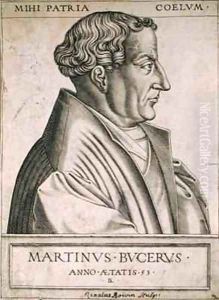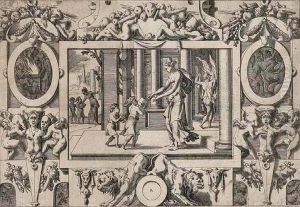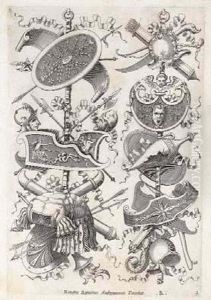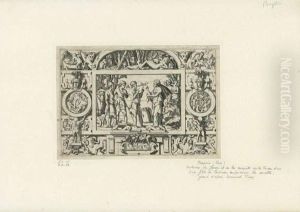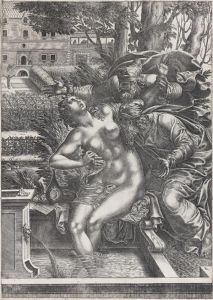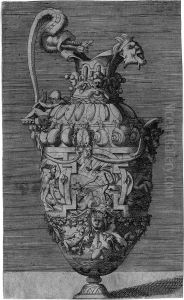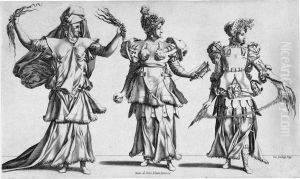Rene Boyvin Paintings
René Boyvin was a French engraver born around 1525, possibly in Angers, France. He was active during the 16th century, a period that witnessed the flourishing of the French Renaissance. Boyvin is often associated with the Fontainebleau School, which was not a physical institution but rather a group of artists who were influenced by the Italian Mannerism and worked at the French royal palace of Fontainebleau.
Boyvin's works are characterized by their intricate detail and the influence of Italian Mannerism, which is evident in the elongated figures and complex compositions he employed. He primarily produced engravings, often basing his works on the designs of other artists, such as Rosso Fiorentino and Francesco Primaticcio, two prominent figures of the Fontainebleau School. Through his engravings, Boyvin played a significant role in disseminating the Mannerist style throughout France and beyond.
The details of Boyvin's life are somewhat obscure, and few documents have survived that can provide a thorough account of his personal and professional history. However, his engravings remain as evidence of his skill and the cultural milieu in which he worked. Boyvin is especially known for his contributions to the book 'Quadrins historiques de la Bible' (Historical Squares of the Bible), which was published in 1560 and included illustrations by several artists of the time.
René Boyvin's death is also not precisely documented, but it is generally believed that he died around 1598. The legacy of his work lies in his contribution to the spread of Mannerist aesthetics in printmaking and the role he played in the cultural exchanges between Italy and France during the Renaissance.
